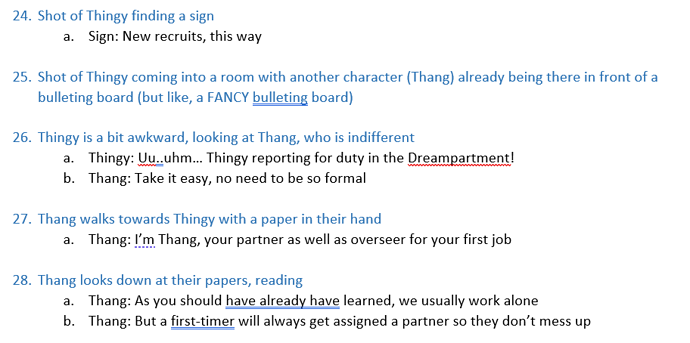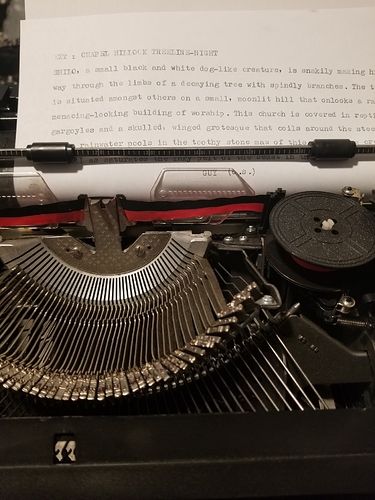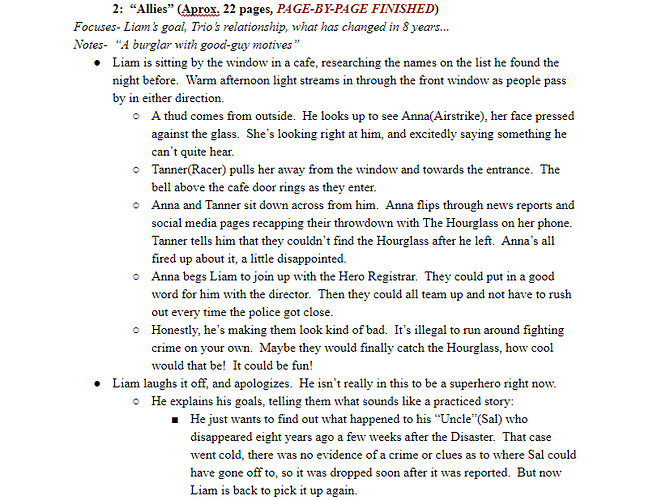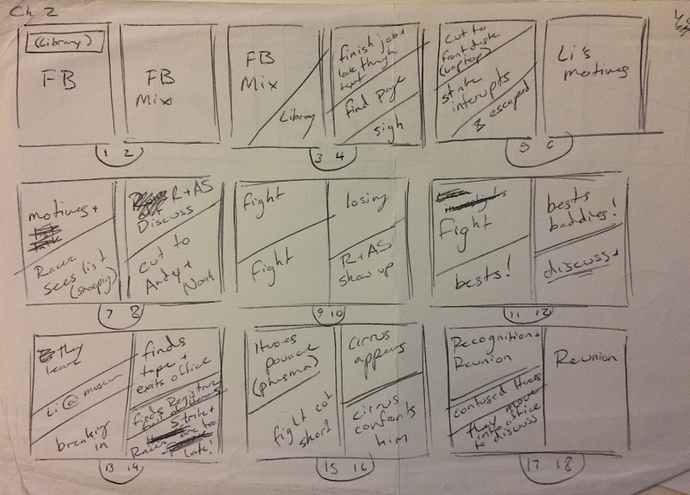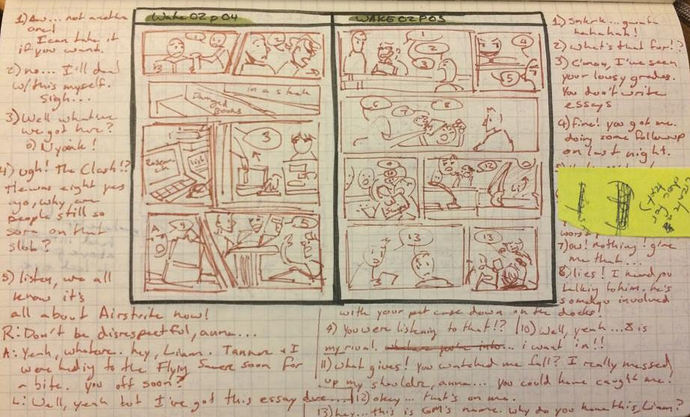I write scripts in Word, formatted in like, list form, which I think makes it pretty easy to read. It was somewhat of a trial and error process with my artist to figure out how to most easily write it though, and in the end it was the list way, and then one episode pr. document.
So like, the numbers corresponds to the panel number and such.
Idk, I think with enough space and formatting, word is great xD
And not having everything in the episodes themselves is good as well.
Other than that, I use excel for everything else (Descriptions, character descriptions, world building and such) than the story and the scripts.
That said, I've only ever written one script that actually is a webtoon, and some other scripts that haven't seen the light of day, so I might just have some hurdles with my current way of doing things, that has yet to come. Idk. So far this is fine:
(This is a screenshot from one of the poor scripts I haven't been able to do anything about, but basically, the number is the panel number, the a b c is dialogue, and if I had gotten to the SFX portion, they would have been in bullet point where they would fit)
Microsoft Word.
I've tried other scripting sites before, but they seem to focus more on panel to panel basis, which just isn't for me.
I script in narrative form, and I like to keep my script flexible. That way, I can add and omit panels as I see fit when sketching. I also have a very particular way I label my scripts, and it hasn't failed me yet:
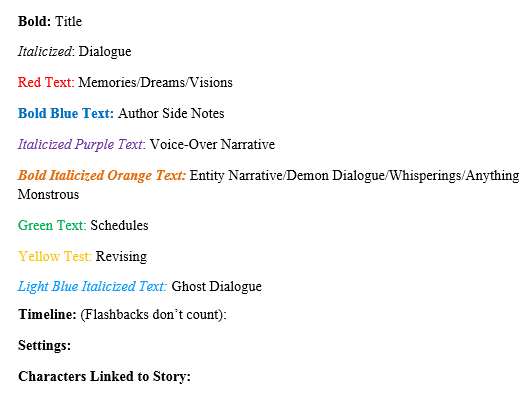
I use Evernote to have sort of a little wiki of various plot information and notes that I can search through if I need to check something. I like that I can add images as well of whatever character or location the note is about to make it easier to sort through visually. I also have a separate notebook in it that I use for script writing. I like to look at the text in bite sized chunks as well, so I generally write each individual scene in a separate note so it doesn't get cluttered. Only once I finish writing all the scenes for a story arc do I put it all together into one document using LibreOffice Writer.
It's a mix of pen and paper, Notepad on my PC, notes section of my phone, Discord, and Google Docs. It's a little haphazard because often times i will be thinking out dialogue and want to write down that moment. I'll often sit down and throw the scripts at my editor on Discord and work out how it'll be fixed or tweaked.
The best and often way I do scripting though? Verbally. Almost every big script I write I usually first make by speaking the lines. It's how I've been doing stories since I was a kid. It has always been the best way for me to block out and figure how things work.
I used to use Celtex(is a mac based app, but has a web browser version that works on windows) back in the day when I was in school for animation. I mostly used the normal screenplay settings, but there were also very nice settings for comic scripts that work more like written storyboards.
But I'm one of those visual leaning people so I found that I was wasting a lot of time writing out stuff when i could have been drawing it. Now I have a detailed plot bullet-pointed out in google docs, but all my firm-scripting is done during my layouts process. Generally I skip the scripts stage and go from something like this:
to this:
to this:
This works well since it's just me working on ALL of it, a lot changes from step to step(i reworked the entire beginning of the chapter 2 script shown by the time I got to layouts) but it lets me balance the visual/written aspects of comics, which
improved my pacing and let character acting do some of the talking instead of just saying everything out in so many words.
I start in Docs, but eventually I get to the point where I need to print it out and go completely analog with it. Colored pens for different types of notes, whiting out and taping over post it notes for revisions. Something about the physical process really helps me nail things down in a way that I can't visualize in the squeaky clean document. It also enables me to accompany the notes with sketches as needed without too much effort.
I haven't outlined a comic since I started using my iPad, but I think the Notes app would give me a digital version of that pretty seamlessly since you can type and handwrite/draw at the same time.
Ummmm HELLO? I've never thought to do something like that second step - very generally just arranging the scenes across the pages before planning the panels. I have a hard time setting scenes and thumbnailing in general, but this seems like it could be a game changer. I cant wait to try. Thank you so much for sharing! 
aaahah i am very conscious about page length(cause i dont wanna draw more than i can handle) so i took a page from print comics artist and made it my own lol! I try to keep scenes contained within single or double page units, and will plan for suspenseful hooks to end on the bottom of pages/page turns. plus side is that it also makes it easier to plan out potential print versions of your comic aahaha!
I was actually just looking at some new software last week. Of course I can't find it now. I think it was this one though since I remember there was a way to track the arcs / journey of a character.
It is a subscription type software but it says they're working to make it accessible across all platforms.
This looks really useful and as a more visual person, I definitely I want to try this. I'm so bad at making detailed scripts because most of the time I need to sketch out the pages to make the pacing work (my pacing is horrendous in text form). However, that results to a very vague script that lacks details. Definitely agree with the shooshell: the second step could be a game changer for me too!

